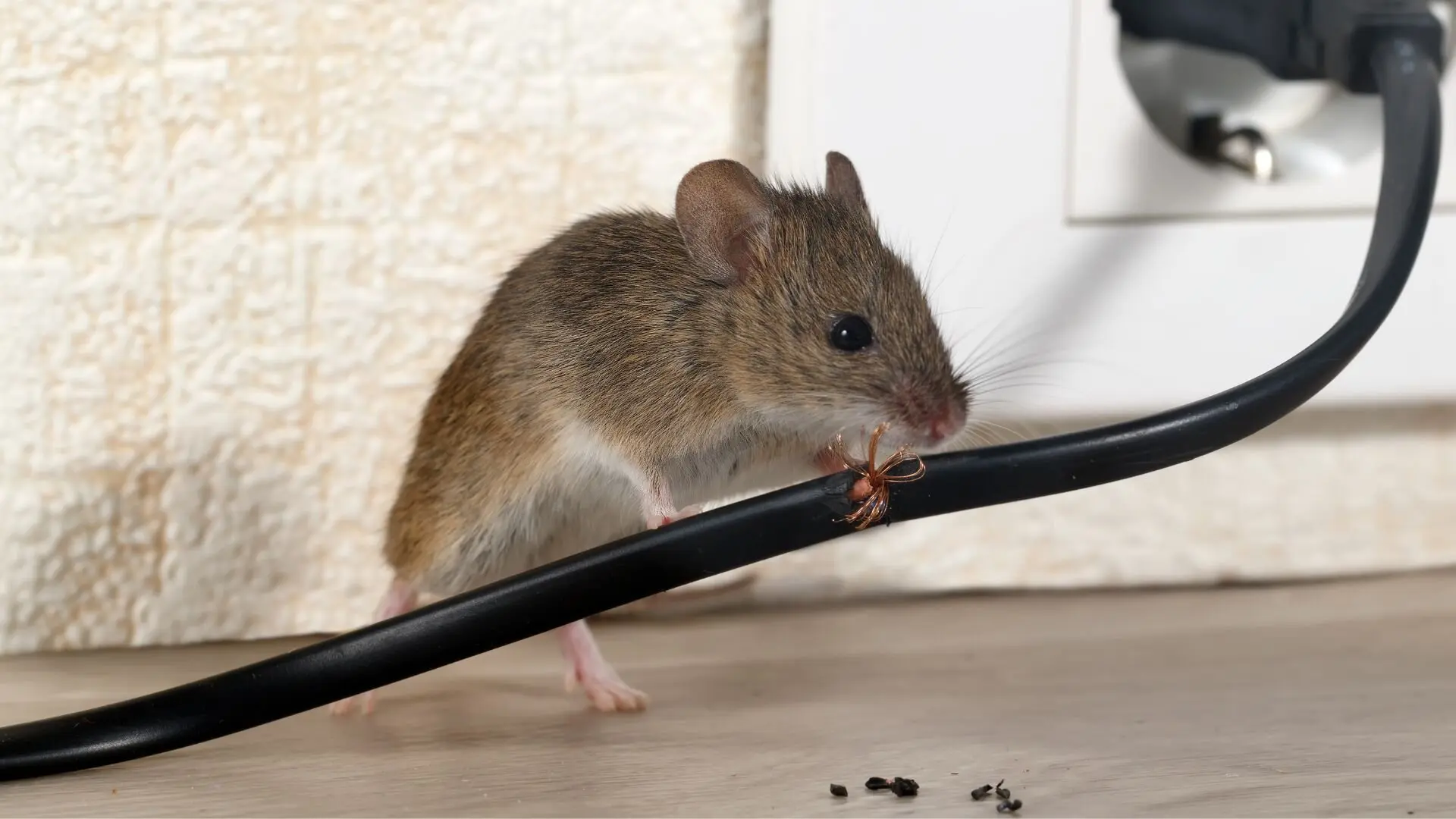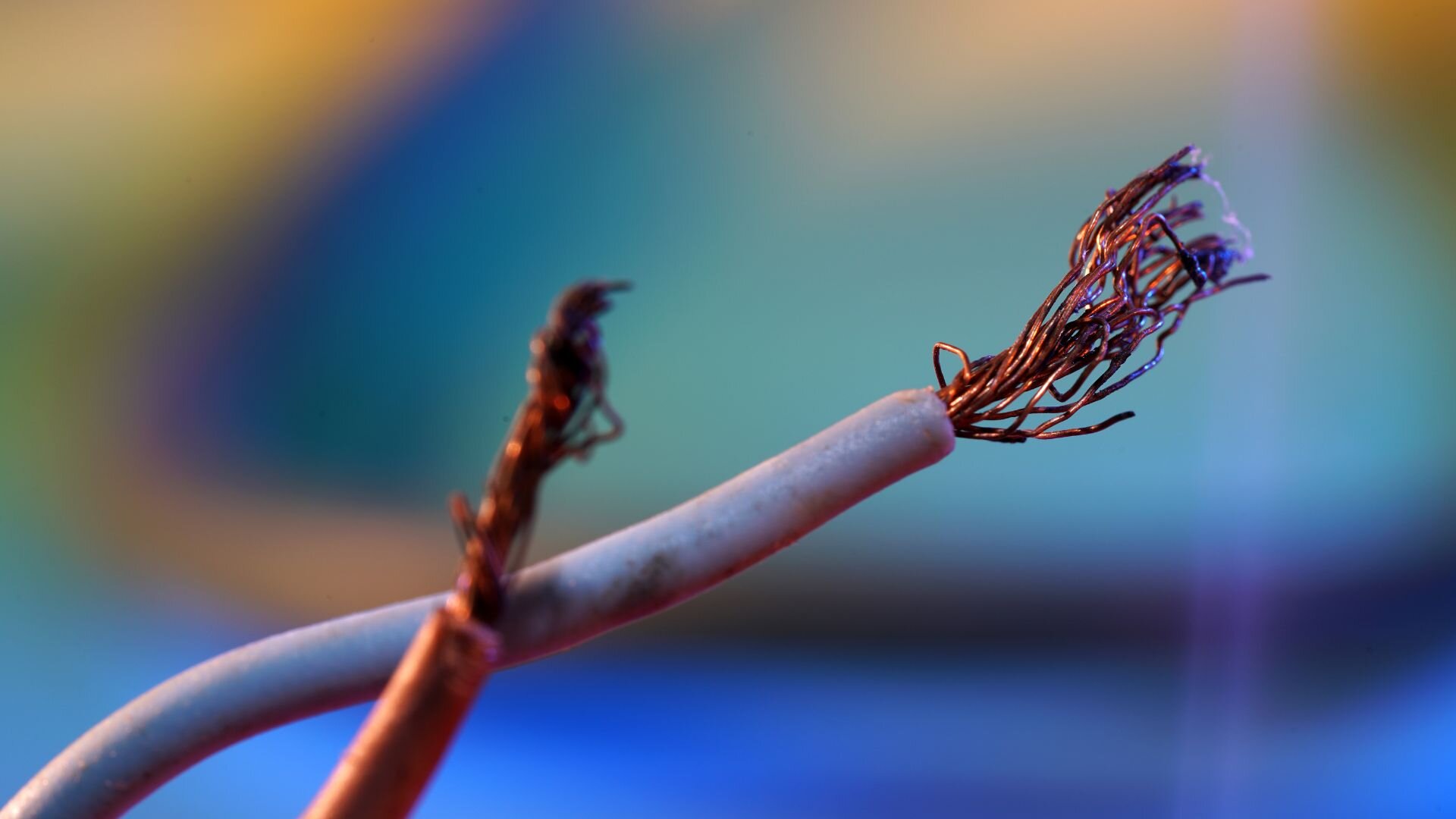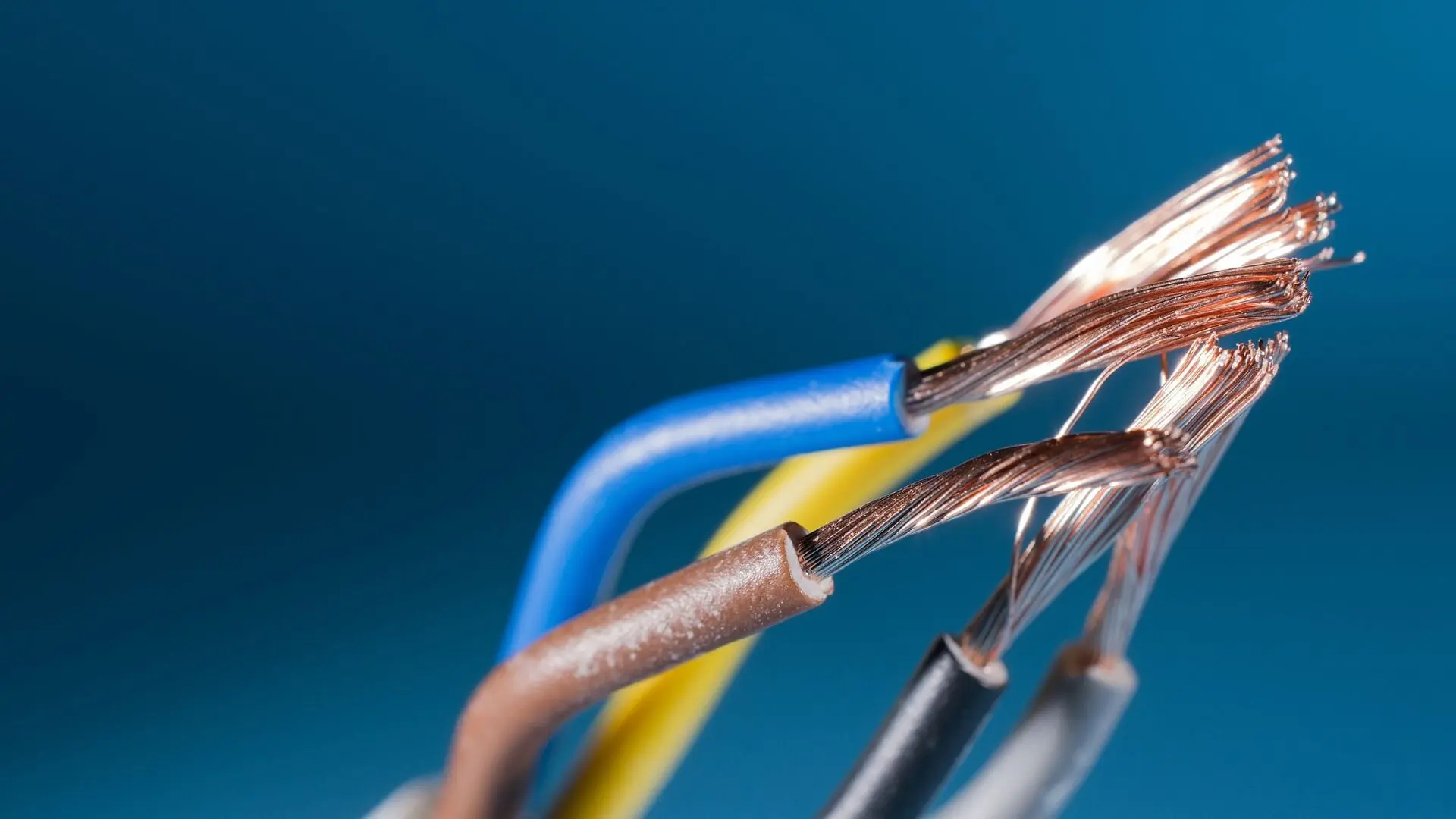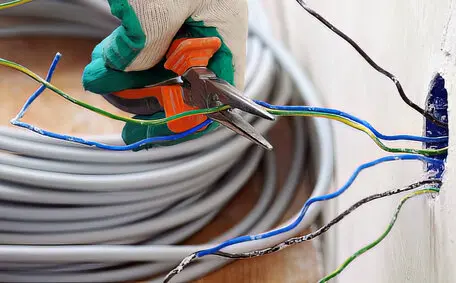Spotting frayed electrical wires at home is never pleasant, as it can spark worries about fires or shocks. Over time, wires might fray because of age, damage, or other reasons, causing the insulation to wear out and reveal the conductors inside.
Recognising the common signs of frayed wires and understanding their causes can help you identify problems early and prevent severe electrical issues. We’ll delve into key causes, like friction, environmental factors, and animal damage, and highlight warning clues such as heat, buzzing, and flickering lights.
Knowing when to call a licensed electrician for repairs and potential wiring replacements could prevent fire risks and make your electrical system safer.
Causes of Fraying
In time, the plastic or rubber insulation covering wires can become damaged and frayed for various reasons. Understanding these causes helps you inspect and maintain wiring, reducing the risk of electrical faults. Learn to repair your wiring before issues escalate.
![2024 03 Mouse Nibbling Through Wire Mouse Nibbling Wire]()
Age
Over decades of use, one of the most common reasons wiring insulation frays is old age and natural material degradation. The copper conductors inside the cables are durable, but the plastic, rubber, or fabric wrapping them eventually break down from years of heat cycles, oxygen exposure, and other environmental stresses. Even high-quality insulation will ultimately crack, dry out, or rot after 30-40 years in a home.
Friction
Friction from wires rubbing against surfaces over many years can also wear away their protective insulation coating. Tight bends in the wiring or staples used to tack it in place exert constant abrasive forces. Vibrations from appliances running on the wires may worsen the friction. This slowly frays and thins the insulation until wire strands become exposed.
Animals
Surprisingly, small animals like rodents chewing through insulation are a major cause of frayed home wiring. Their sharp teeth easily damage the thin, flexible plastic or rubber coatings. Watch for signs of frayed wires in attics or basements where mice can access exposed cabling. Once the conductors are visible, pets may also start chewing out of curiosity.
Environmental Factors
Over time, environmental factors such as sunlight, pollution, and salty air gradually wear down wire insulation. Moisture from floods, leaks, or condensation further weakens it, making plastic brittle and cracks appear, while fabric insulations can rot from ongoing dampness.
Overloading Circuits
When electrical wires consistently carry more current than they are rated for, heat builds up in the cables. This accelerates the breakdown of wire insulation through thermal stress. Check for overloading if you notice flicker lights or frequently tripped circuit breakers, especially in older homes with insufficient circuits. Upgrading to a thicker gauge wiring and circuit breaker may be needed.
Fraying from age, friction, animals, weathering, or overcurrent often develops gradually over months or years. However, it can be prevented with periodic inspections by a licensed electrician.
They will look for early warning signs of insulation damage and make wiring repairs or replacements before hazardous electrical faults occur. Stay vigilant, as overlooked frayed wiring can lead to dangerous shorts, fires, or shock risks.
Signs of Fraying
Identifying early signs of frayed or damaged wiring can help prevent electrical fires, shocks, and outages. Keep an eye out for these common indicators that your insulation is thinning and might need repair:
![2024 03 Frayed Wires Frayed Wires]()
Visible Cracks or Tears
Look closely along the length of electrical wiring and electrical cords for cracks, holes, or rips in the outer protective insulation. This exposes the inner current-carrying copper conductors, which can arc and shorten if they contact other wires, metal junction boxes, or appliance frames. Small nicks or cuts in the insulation can quickly worsen over time due to physical stress or environmental factors.
Discolouration
As plastic or rubber insulation starts deteriorating from age or heat damage, it often fades in colour or turns brown. Darkening around the loose connections may indicate excessive resistance and overheating. Ultraviolet (UV) light exposure can cause insulation to fade or discolour, indicating weakened material properties and reduced protection.
Brittle Insulation
As electrical wiring ages, the copper conductors’ insulation becomes brittle and loses flexibility due to prolonged exposure to oxygen and temperature fluctuations. To determine if your wiring has reached this critical stage, gently bend the cables and observe if the insulation easily crumbles or flakes off. If you notice this deterioration, it’s a clear indication that
Exposed Wire Strands
Individual copper wire strands poking through ripped insulation are a clear red flag. They risk making electrical contact with other wires, metal surfaces, or even people. Any exposed conductors need immediate repair.
Warmth
When using your appliances, gently feel the wires and cords. If you notice any unusual warmth, it might indicate frayed insulation leading to increased resistance. This rise in resistance causes excessive heat, creating potential dangers. Trust your intuition and look into unexplained warmth—it might just be your wiring signaling for help.
Arcing Noises
Listen for cracking, sizzling, or buzzing coming from the electrical outlets within walls, junction boxes, or appliances. This indicates dangerous electrical arcing as a frayed wire touches and current sporadically jumps between conductors through deteriorated insulation.
Stay Vigilant Against Wire Fraying
![2024 03 Frayed Wiring Frayed Wiring]()
Common causes of dangerous wire fraying include age-related degradation, friction, animal damage, moisture, and circuit overloading over time. However, attention to warning signs like cracked insulation, heat, discolouration, buzzing noises, and flickering lights allows issues to be identified early.
Quickly scheduling electrician repairs or replacements at the first sign of a severe problem reduces fire risks and other electrical hazards. Installing new power surges, protective power strips, outlet covers, wrapping layers of electrical tape around the entire frayed section, and a cable saver can also help extend the safe functioning of aging electrical systems. With vigilance and proper maintenance, catastrophic wire failures can be avoided.
Bright Force Electrical has provided wiring inspection, repair and installation services to customers throughout Sydney for many years. Our Level 2 licensed electricians can thoroughly evaluate your home’s electrical systems to identify fraying wires or other safety issues. They have the expertise to make all necessary repairs and upgrades to preserve the integrity of electrical wiring insulation and prevent hazardous electrical faults.
Protect your family by contacting Bright Force Electrical at the first sign of potential wire fraying. Let our experienced team of electricians handle wiring problems properly and keep your electrical systems running safely for decades to come. So contact us today!











